It may seem silly but if before eating, having a glass of wine or taking a walk -in fact, Before you do anything, you close your eyes for a moment. and you breathe two or three times, you will notice how everything feels different. That is why it is like this, with our eyes closed and breathing deeply, as we prepare to begin this journey of back roads and rhythms slowed down inside the Empordà.
And we do it by going into the Can Fornaca Forest , in Caldes of Malavella, accompanied by Montse Moya i Cardona, forest therapeutic guide of Selvans, an entity dedicated to protecting the mature forests of Catalonia through tourist activities such as shinrin-yoku or forest bathing.
"It's about offering an economical alternative to forest owners –In Catalonia almost all of them are private– so that they are not cut down”, she explains to us. The proposal, walk as slowly as possible and in total silence, It seems simple, but it is not. “A lot of people get anxiety. There are those who find it reassuring to hear a car in the distance, they feel that humanity is closer”.
To travel 900 meters, with zero drop, it takes three hours. And of course, the mind does its thing: he gets distracted, he compares himself, he gets bored, he whips himself, he resigns himself and, wham, suddenly the senses open up, the attention is triggered and one begins to notice the butterflies, the texture of the leaves, the cobwebs that shine like glass threads... and to be aware that the air is health –the famous terpenes that trees give off, a real boost for our immune system– and that the forest embraces us.
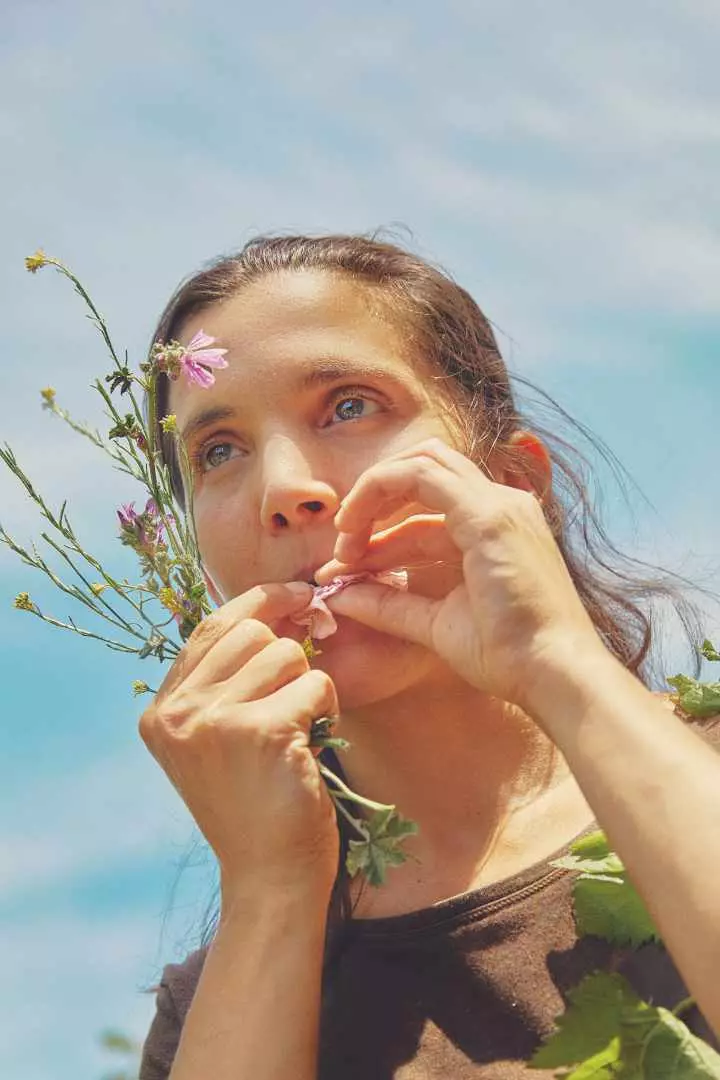
Anaïs de Villasante performs tastings and pairings with wild flowers at Vinyes d'Olivardots, in Capmany.
Maintaining this predisposition to listen and this forced parsimony is what we will try to do throughout this wellness trip what includes country picnics Y Michelin star dinners, vineyards Y rice paddies, small hotels and large resorts, workshops to make food your medicine and massages, wine tastings and yoga...
Wine and yoga? “Wine is not only an alcoholic beverage, it is the result of a very patient process that needs listening and attention ; It is a food that is tasted with all the senses and following a ritual.
In addition, the grape is a very local fruit, very healthy that contains polyphenols, just like blueberries, with rejuvenating and antidepressant effects”, defends Anna Pérez, yoga teacher and co-owner of More Geli, a young woman ecological and family winery with views of the Montgrí massif. Has she convinced you?
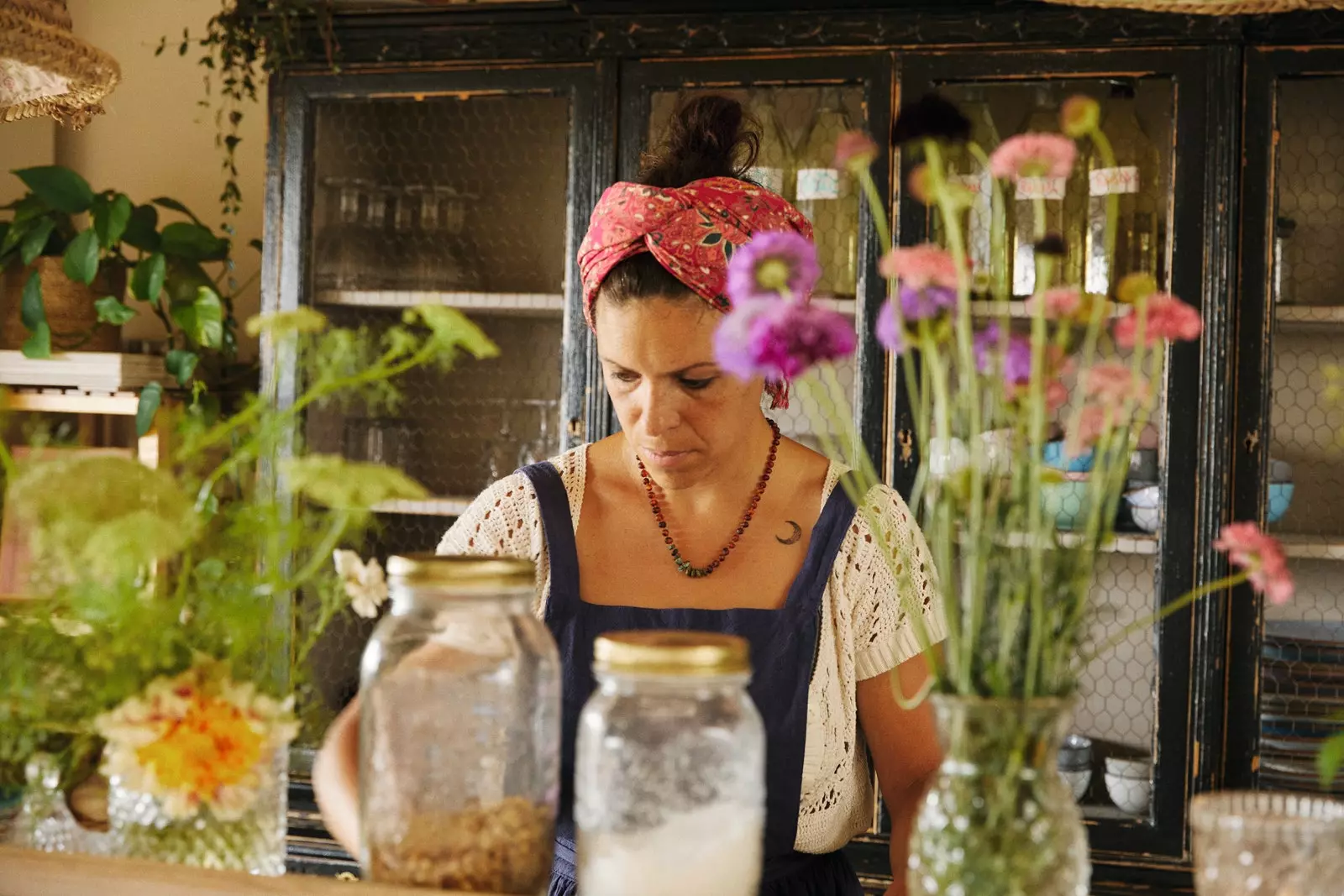
Cook at the Arkhé de Pals hotel, in the Empordà.
Because, ultimately, This is what this trip is about, any trip: to broaden our gaze, to meet people who make us see things differently. Like Montse. Like Anna. Like Matthias Hespe and Marta Romaní, who from the macrobiotic cooking school Espai Cuinar Sa of Girona and the mindful eating workshops of Hotel Arkhe del Pals, respectively, they teach us how to ally ourselves with food to become the best version of ourselves.
Or like Oriol Dalmau, the biologist in charge of the environmental project of PGA Catalonia Resort. Where we only see a golf course, Oriol sees the second most important wetland in Catalonia.
A sanctuary of rafts, lakes and streams that serve as habitat for turtles, lizards, snakes and countless birds. Some species are unique, endemic. They are so comfortable that they have been encouraged to nest.
“Golf courses have a bad reputation for their high consumption of resources, but Prejudices must be removed. if we manage it as a natural park and it acts as a breeding area for native species, things change completely”.
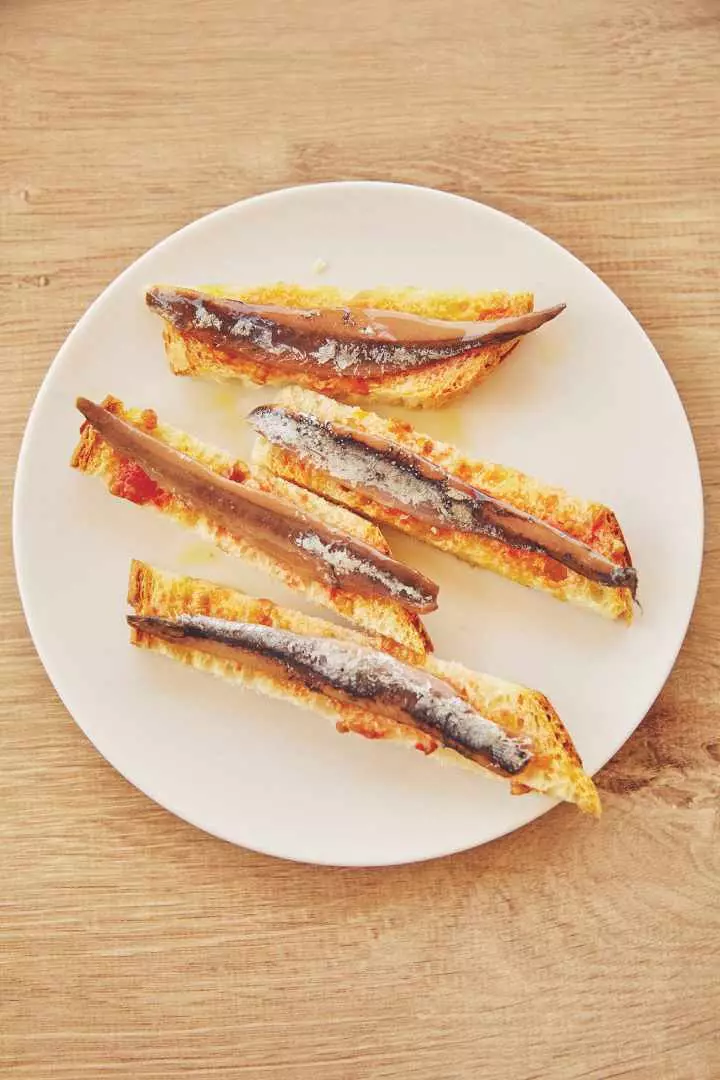
Anchovies from L'Escala, at the Vicus restaurant, in Pals.
Or as Eloi Madrà, master cork peeler of the Gavarras and one of the few men who still talk to cork oaks. “Every time you open a bottle of wine, think of the cork stopper as a little treasure that is at least 50 years old,” Eloi tells us as he listens to the crack of his ax as it cuts through the bark of an old cork oak.
“In the US they believed that to get the cork you had to kill the tree and they made an association so that people would stop drinking wine with natural stoppers”. The peel of the cork –takes it out, as they say in Andalusia– is a “small surgical intervention” which is done with the greatest respect for the tree.
A singular historical tradition – it only lasts a few weeks between june and july – which combines culture and nature, human activity and forest management in an area from which 60% of the world's cava and champagne corks come from. "Without a tree there is no plug and there is no industry . Now it's called bioeconomy, but we've been working like this for centuries here."
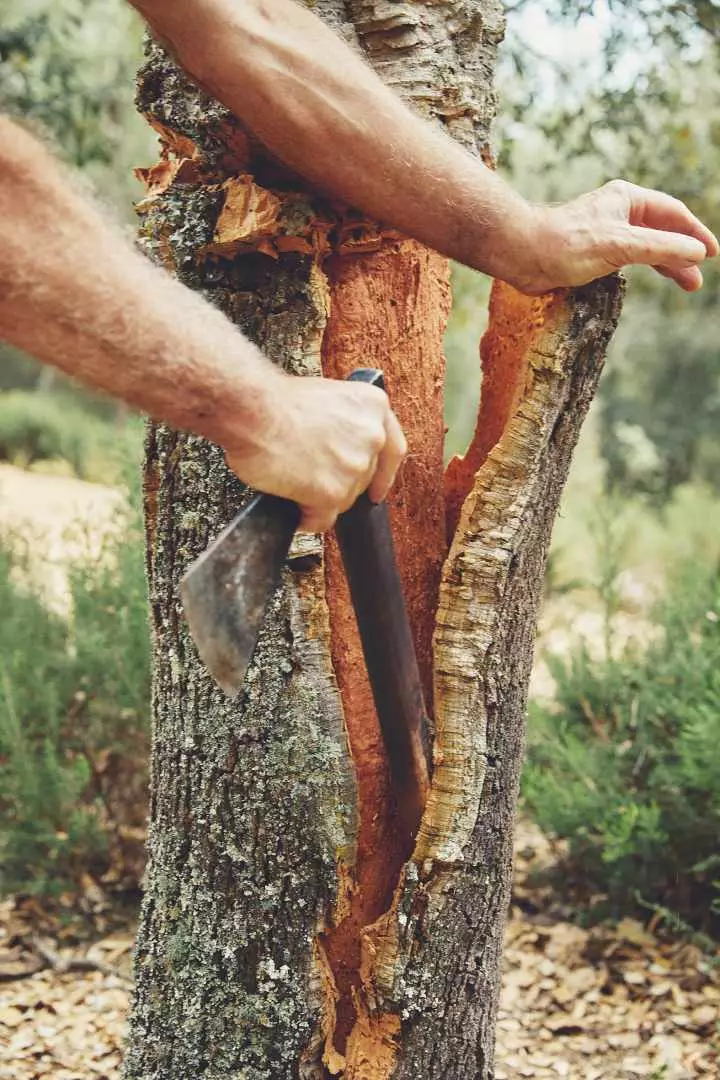
A moment of the peeling of the cork.
Mike Duff and Michelle Wilson, owners of the witch of the little town of Púbol have also trained their ears to understand what the environment and their idyllic estate, which previously belonged to the painter Casademont, has wanted to become an edible forest and function autonomously, without leaving waste, to receive yoga retreats –Michelle is an art therapist–, cyclists –Mike is a trainer–, musicians who want to perform in nature –he is also a DJ– and travelers with an interesting conversation.
"We try to live in the best possible way to show guests that it can be done." and that includes Experiment with fermented. “It is a way of preserving the harvest, but also a form of gastronomy. In London there are already hipster bars where you drink vinegar and taste various types of sauerkraut”.
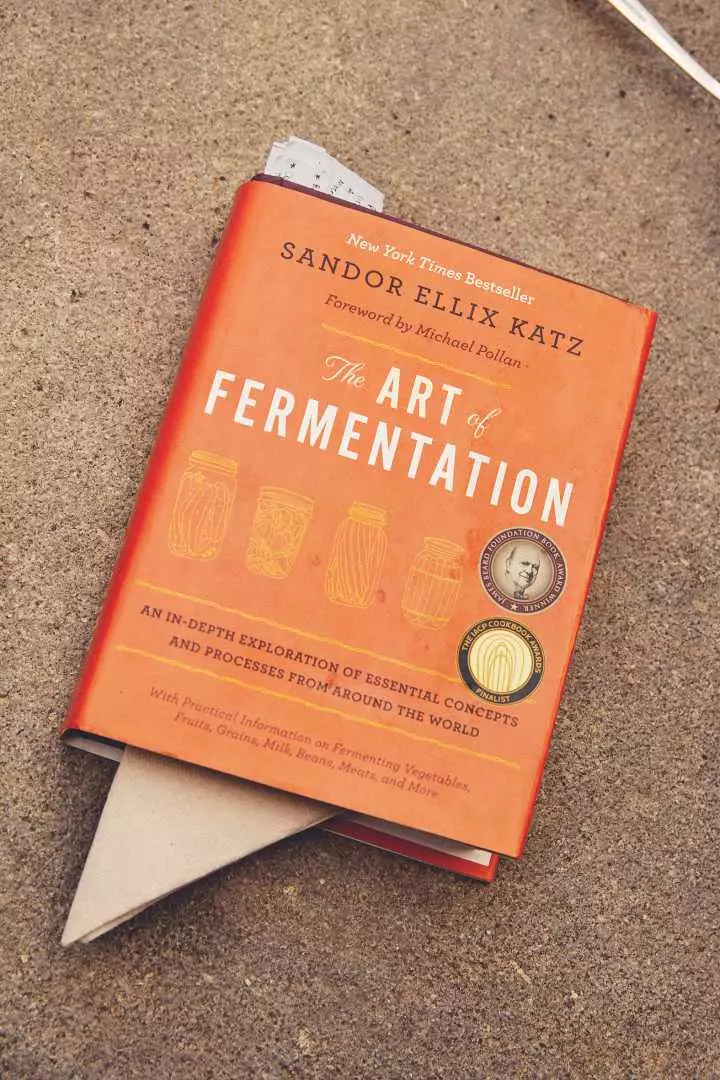
The "bible" of the fermented.
If we were grapevine, we would probably want to live in the Garbet Estate, the most beautiful of the five vineyards of Bodegas Perelada, facing the sea of Cap de Creus, but... “Imagine going thirsty with all this water in front of you, with hardly any rain, with so much wind and this sunstroke.
For the plant to survive you have to make a heroic viticulture”, says Dolors Vilamitjana, public relations of the largest and most heterogeneous winery in the Empordà.
But, once again, things are not what they seem: "We don't want to produce a lot but take advantage of our different vineyards to make a representation of the personality of the land of the Empordà”.
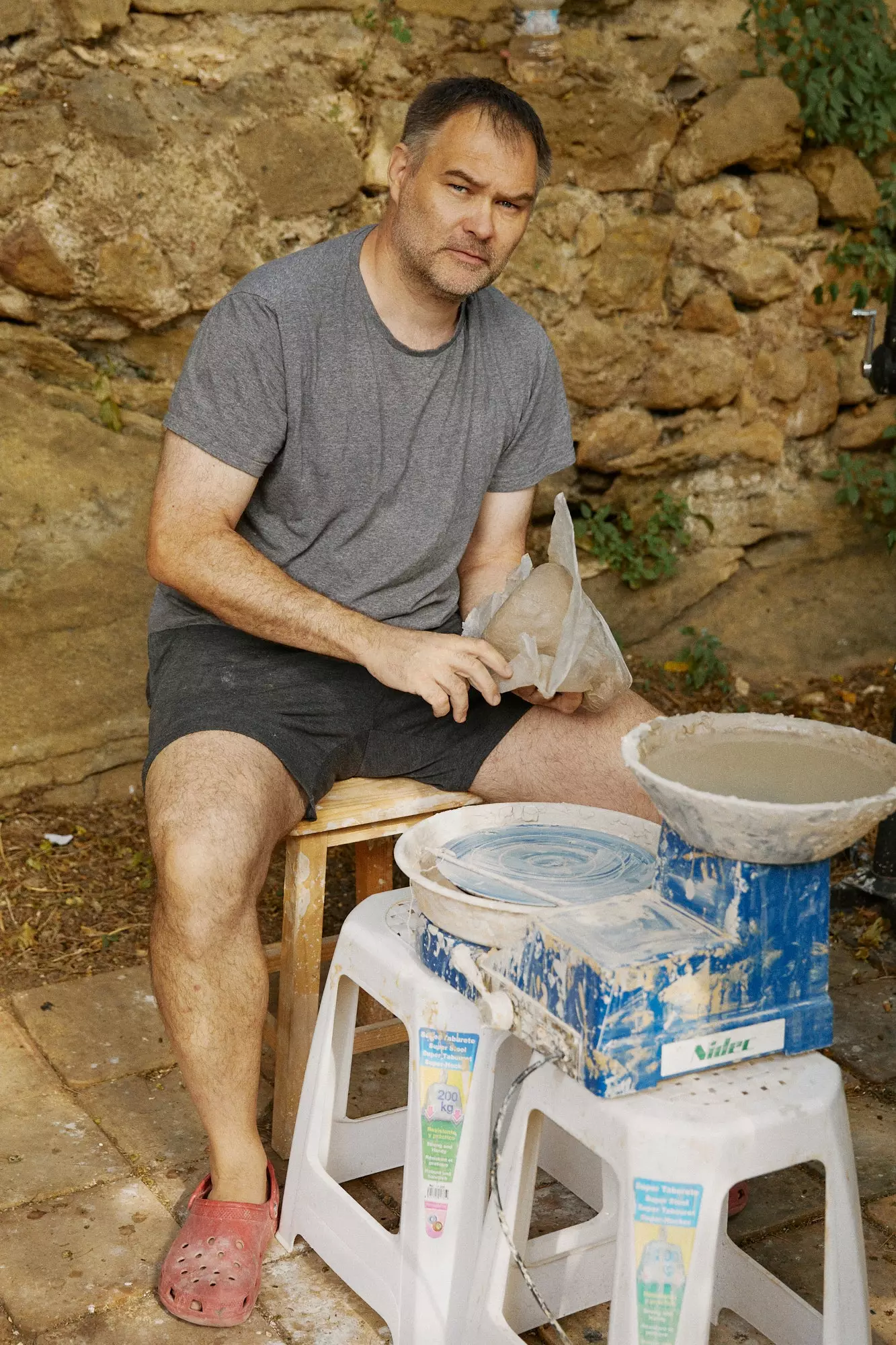
The artisan and biologist Martin Ley, owner of Cerámica Ley, in the town of Peratallada.
The land of Vinyes d'Olivardots not much more hospitable. "Us They said it was impossible to make wine here." recalls Carlota Pena, who, at 28, shows the intuition of an old peasant.
“In the spring of 2019 I noticed a lot of chamomile growing, so I cut it down and dried it. When we had a heat wave in July, I understood why: I had to infuse it and spray the vineyard with it to cool it down. We work with the cosmos, with the orbit of the moon, with bioindicator plants, with sheep, chickens, cats...”.
And with Anaïs de Villasante, founder of Scents to the Forest and guide to conscious tastings that pair with wild flowers. With them we end this trip as we started it: paying attention to the forest and what moves within us. “Approach the plants, introduce yourselves and, if you want something, ask permission. You will see that nature always puts in front of us what we need”. What do you need?
This report was published in the number 147 of the Condé Nast Traveler Magazine (Summer 2021). Subscribe to the printed edition (€18.00, annual subscription, by calling 902 53 55 57 or from our website). The April issue of Condé Nast Traveler is available in its digital version to enjoy on your preferred device
